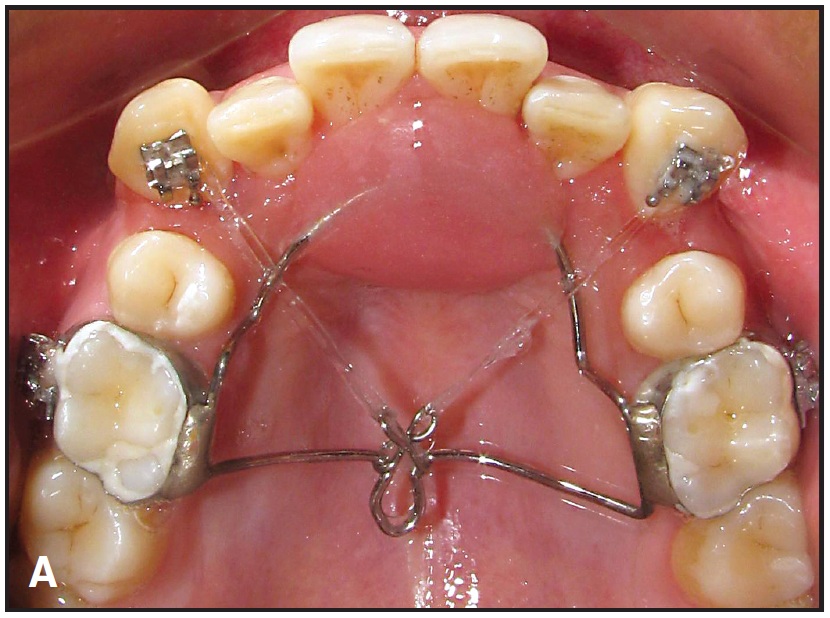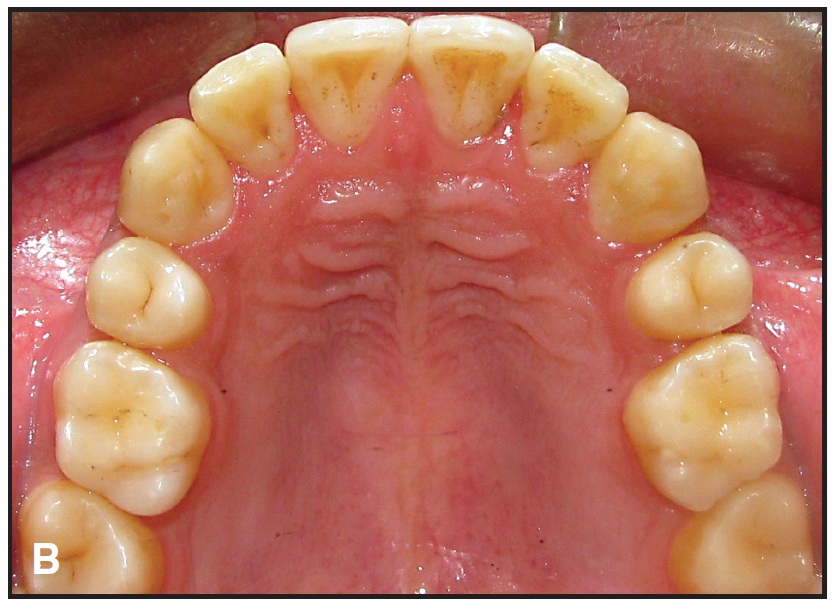In space-closure cases, canines are generally retracted with either frictional (sliding) or nonfrictional (closing-loop) mechanics.1,2 We have devised a simple method for lingual traction of protrusive canines that requires no anterior labial appliances.
Procedure
1. Fabricate a palatal arch with a Nance button from .036" stainless steel wire and incorporate a soldered transpalatal arch (TPA) with a teardrop loop at the midline.
2. Bend two figure-8 clips from .032" stainless steel wire, each about 8mm in length. Attach the clips to the TPA on either side of the loop.
3. Bond canine brackets with hooks to the lingual surfaces of the canines, and stretch a length of elastomeric chain between each bracket and the palatal clip on the opposite side of the TPA loop (A)
In the case shown here, canine retraction was accomplished in three months, and the patient finished comprehensive orthodontic treatment eight months later (B).
Similar articles from the archive:


By avoiding the use of initial labial appliances, this retraction technique offers an attractive alternative to patients who are concerned about esthetics. It also prevents tissue irritation from labial brackets on protrusive canines.
REFERENCES
- 1. Hayashi, K.; Uechi, J.; Marata, M.; and Mizoguchi, I.: Comparison of maxillary canine retraction with sliding mechanics and a retraction spring: A three dimensional analysis based on a midpalatal orthodontic implant, Eur. J. Orthod. 26:585-589, 2004.
- 2. Nishio, C.; Da Motta, A.F.J.; Elias, C.N.; and Mucha, N.: In vitro evaluation of frictional forces between archwires and ceramic brackets, Am. J. Orthod. 125:56-64, 2004.



